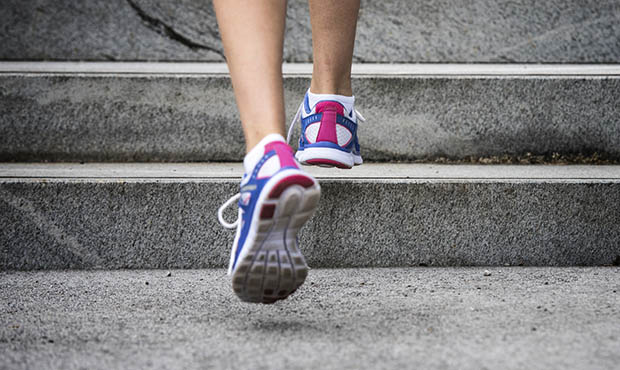
One of the most critical pieces of running gear weighs less than an ounce, but it's essential for putting your best foot forward—literally.
Running Events Near You
We're talking about the running sock.
From compression socks to hidden socks, to socks that have "ventilation" and "antimicrobial" features, there are many choices out there for dressing your feet.
Some socks are best suited for the long run, while others are meant for a hard morning on the trail. Regardless of the type, there are still a few features that every running sock should boast, like preventing blisters and keeping your toes dry on wet runs.
We talked to Tanya Pictor, Vice President of Marketing for Implus, for advice on how to choose the perfect running sock. Implus owns Balega socks, a favorite among runners, so we knew we were in the right hands (or should we say, feet).
Three Things to Look For
Just a few decades ago, runners reached for a pair of 100 percent cotton socks before heading out the door.
These days, however, a good pair of running socks will be made of moisture-wicking fabrics, such as polyester, acrylic or even a wool and nylon blend. Pictor says that above all else, a correct fitting sock should do three things: protect your feet, be comfortable and wick away moisture.
"The ultimate sock experience is the one where you feel you are wearing no socks at all," she says.
Make It Running Specific
Resist the urge to just buy a pair of "athletic socks." Look for a pair designed specifically for running, even if they're on the expensive side.
Most running socks are priced around $12 to $15 for a single pair, but if you're committed to running, it's worth the extra money.
In comparison to regular socks, running socks are built with cushioning in mind, which is especially important when you're pounding the pavement day after day. A good pair of running socks will also have a tight feel around the mid-foot and heel, but plenty of room for your toes.
"Look for a good, deep heel pocket that cups your heel and will not drag down," Pictor says. "Seamless toe and a high-end technical performance yarn that wicks is a must."
Don't Ignore Your Personal Running Needs
If you like a cushioned feel, try out a thicker sock. If that feels too stuffy in your shoe, opt for a lighter and thinner model.
You might prefer a knee-high length, crew cuts or ones that have a tab on the back if you have problems with your heel rubbing against your shoe. The point is to pick a sock based on what your personal running needs are.
Just like choosing running shoes, choosing running socks should take into account your personal preference and style.
"When you buy a new pair of shoes, team them up with two to three pairs of new socks," Pictor says. "See it as maximizing your investment in the shoes."
Know When to Toss Them
Give your worn-out running socks the boot when they have lost their shape or cushioning. They'll be no help to you on the trails once their quality is diminished.
"Your socks should always mold to the contours of the foot, and if they don't, it means that the profile of the fabrics no longer matches that of the foot," Pictor says. "At this stage, the sock no longer offers the protection and function it was designed to provide. It’s time to buy new ones."
Quick Tips for Caring for Your Socks
- Reserve them only for running.
- Do not bleach.
- Air dry or dry on low heat.
- Turn socks inside out before washing.
- Follow manufacturer directions for washing.
Recent Articles:
- Twins with Severe Autism Find Joy in "Silent Running"
- 7 Tips for Getting a Good Night's Sleep Before a Race
- 2016 High Visibility Running Trends
Connect with us on Twitter, Facebook, Instagram or Pinterest for more tips, recipes and ideas to fuel your ACTIVE life.
 Find your next race.
Find your next race.



